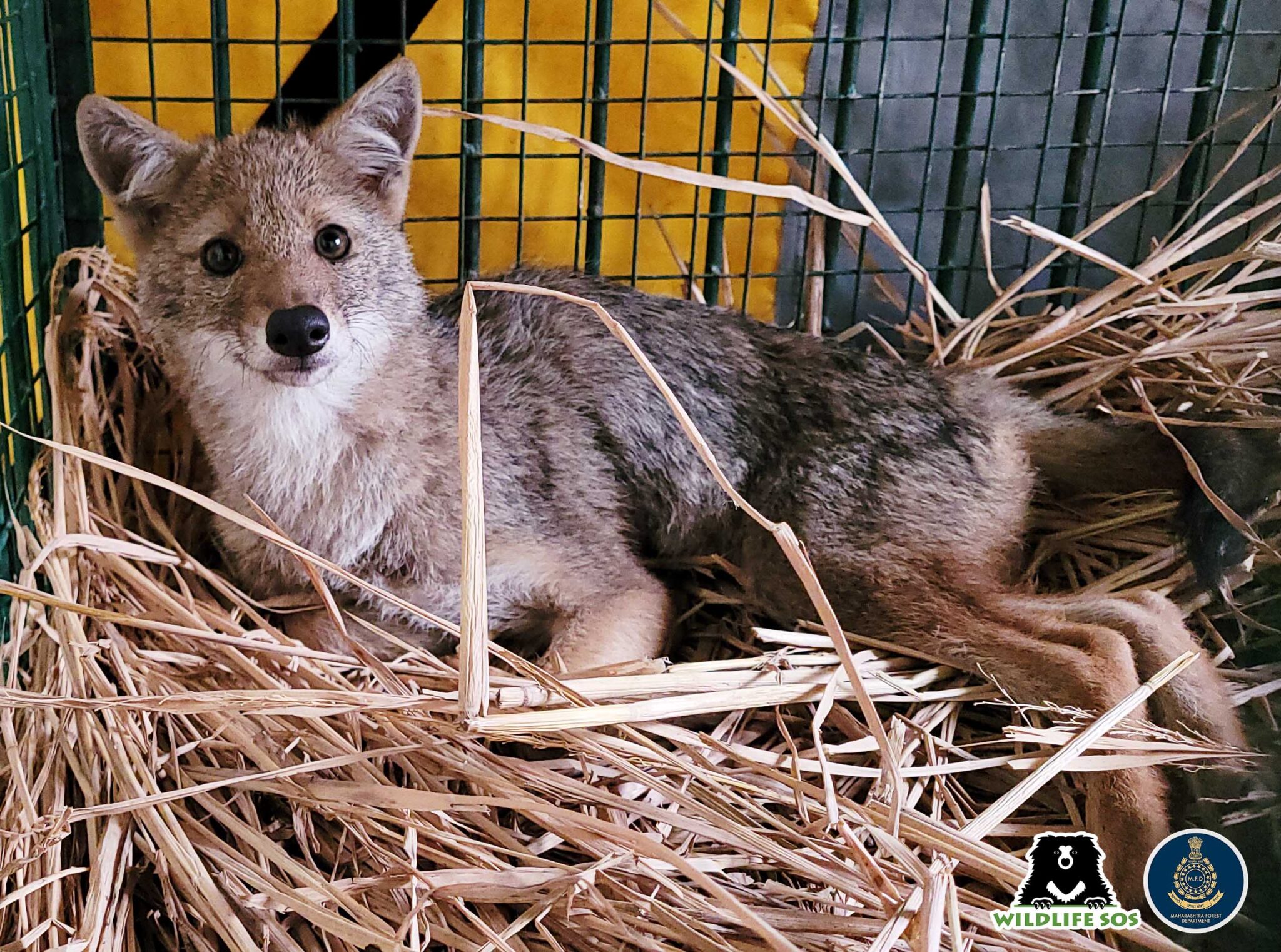Pune: Paralysed Jackal Rescued By Wildlife SOS And Maharashtra Forest Department

Junnar, 17th January 2022: A young Golden Jackal found to be suffering from paralysis was rescued by Wildlife SOS & the Maharashtra Forest Department near Tejur village in the Junnar division of Maharashtra.
The jackal was rushed to the Manikdoh Leopard Rescue Centre and is currently under intensive care provided by Wildlife SOS veterinarians.
Occupants of Tejur village found the jackal in a semi-conscious state in a field and swiftly alerted the Maharashtra Forest Department on Sunday. The forest officials in turn informed the Wildlife SOS team who immediately rushed to the spot to aid in the rescue operation.
Upon close inspection, Wildlife SOS Veterinary Officer, Dr. Nikhil Bangar determined that the jackal had suffered complete hindquarter paralysis and was unable to bear its own body weight. The injured animal, estimated to be 8-month-old, was taken to the Manikdoh Leopard Rescue Center (MLRC) in Junnar, which is jointly run by Wildlife SOS and the Forest Department.
Dr. Nikhil Bangar, Wildlife Veterinary Officer, Wildlife SOS, said, “When we reached the spot, the jackal was lying motionless and we administered a few medicines before bringing it back to the centre. We suspect that the animal was probably injured in a conflict situation. We have kept the jackal under intensive care and will keep monitoring its condition.”
Kartick Satyanarayan, Co-founder and CEO, Wildlife SOS said, “Thanks to the timely rescue call of the villagers and swift response of the Forest department, we were able to rush to the aid of the jackal. Our wildlife veterinarians are monitoring the animal constantly to check its progress.”
The Golden jackal, also known as the Indian jackal is native to the Indian subcontinent and plays a significant ecological role in forest ecosystems. They are omnivorous in nature and feed on a variety of small mammals, birds, fishes, hares and even fruits. Unfortunately, threats such as habitat fragmentation, hunting, wildlife trafficking, man-animal conflict and road accidents threaten their existence. The species is protected under Schedule II of the Wildlife Protection Act, 1972 and its estimated wild population is said to be 80,000.






